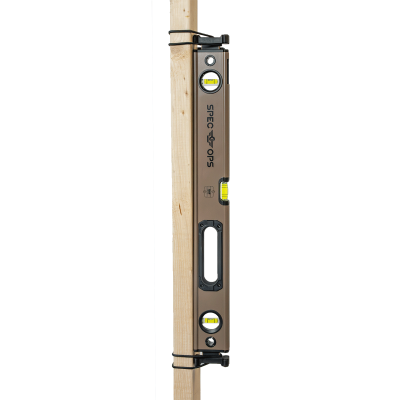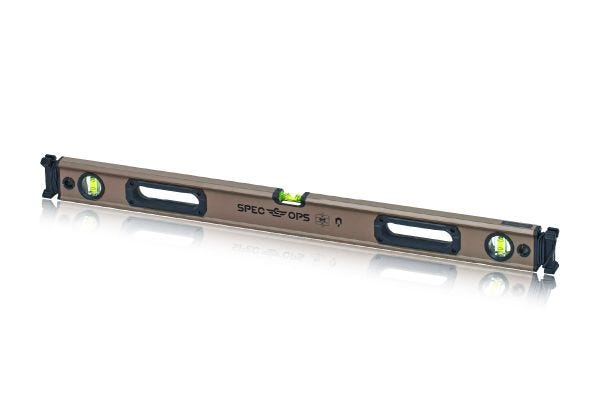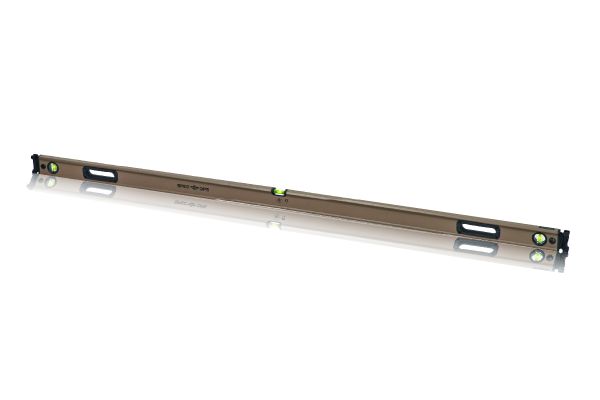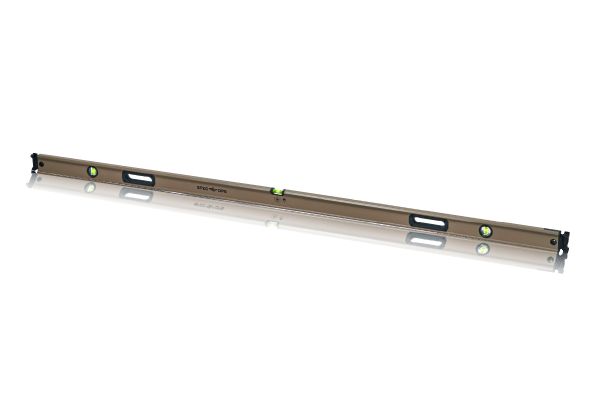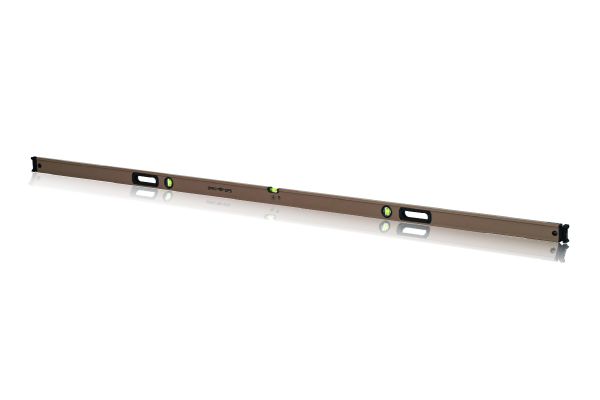The Ultimate Guide to Selecting the Perfect Level for Your Job with Spec Ops Tools
- May 24, 2023
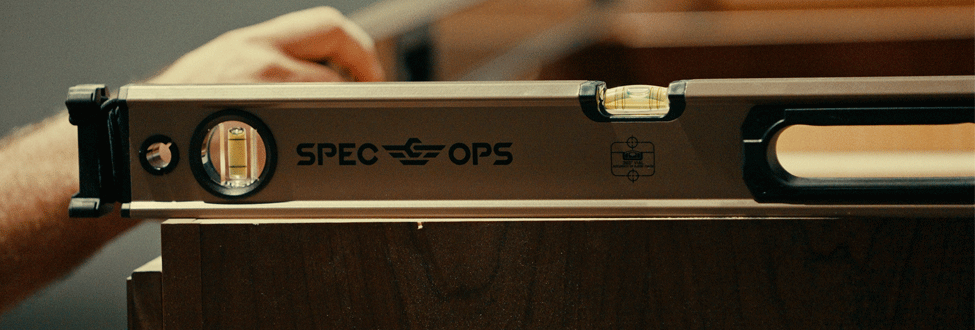
How to Choose the Right Level for the Job
When it comes to getting the ideal results on the jobsite, you’ve got to have quality tools. One tool that is essential for many projects is a level. A level is a tool used to determine if a surface is
level (parallel to the ground) or plumb (perpendicular to the ground). This is important for ensuring accuracy and precision of any work you do. In this post, we'll cover the different types
of levels available, how to use them, and some tips for selecting the right level for your project.
Types of Levels
There are several types of levels available, each with its own unique features and uses. Here are some of the most common types of levels:
1. Spirit Level: This is the most common type of level. It consists of a glass tube filled with alcohol (hence the name), with a bubble in the center. When the bubble is centered between two lines, the surface is level or plumb. Sets of outer lines exist to indicate a 2% grade, which is a standard slope for drainage in projects requiring it.
2. Torpedo Level: This type of level is small and compact, making it perfect for tight spaces. It usually has three vials that can detect plumb, level, and 45-degree angles. This variety of levels often finds use in the plumbing and electrical trades. These are good when you don’t have to level a very long section of material.
3. Pocket Level: This is an even more portable variant of level than the torpedo style. This level is small enough to fit in a pocket or pouch.
4. Post Level: This level is used to ensure that posts or columns are plumb. It attaches to the post and has two vials that detect plumb and level.
5. Bullseye Level: A small circular level that measures in two dimensions. This tool is often used on the legs of furniture or appliances.
6. Plumb Bob: An ancient method of determining if an object is directly above or below. A weighted point is suspended from a string and allowed to come to a stop. This tool still sees use in setting concrete footings.
How to Use a Level:
Using a level is fairly straightforward. Here are the basic steps:
1. Apply the level to the surface of the material that is being leveled or plumbed. Make certain to apply the level with the milled surface against the material being leveled.
2. Observe the appropriate vial, depending on orientation of material and level.
3. If the material is level or plumb, relevant vial will show the bubble centered between the two parallel markings within the level.
4. If the bubble is not centered, adjust material until the bubble becomes centered within the vial. When it is correctly oriented, you can fasten your material.
Tips for Selecting the Right Level
When selecting a level for your project, here are some tips to keep in mind:
1. Consider the size of the project: If you're working on a large project, you may wantto consider a longer box beam level, as the extended length will give a better picture
across the surface.
2. Consider the surface: If you're working on a metal surface like a metal door jamb or steel studs, you can use a magnetic level to adhere the level to the surface.
3. Consider the cost: Levels range in price from a few dollars to hundreds of dollars. Consider your budget and the features you need before making a purchase.
What is the Spec Ops Tourniquet Bungee System?
Spec Ops Tools offers a range of high-quality levels that are designed to withstand tough conditions and provide accurate readings. Each level is drop-tested to exceed MIL-STD-810G to
ensure durability on the toughest job sites. One standout feature of Spec Ops Tools levels is the patented Tourniquet Bungee System for hand-free leveling. This makes it easier to get an accurate reading when alone on a job site. Use the bungee system to secure mount the level to lumber, conduit, PVC and other surfaces. In addition to the Tourniquet Bungee System, Spec Ops Tools levels are designed with precision in mind. They have easy-to-read vials that are highly accurate and provide clear readings. The vials feature three 33% higher visibility epoxy-locked acrylic block vials that deliver an accuracy of 0.0005”/inch. They won't fog up or become damaged over time.
Another great feature of Spec Ops Tools levels is their durability. They are made with high-quality materials that are designed to withstand tough conditions and last for years of use. This
makes them a great choice for contractors, builders, or anyone who needs a reliable level for their projects.
Finally, Spec Ops Tools levels come with a lifetime warranty. This shows their confidence in the quality of their products and provides peace of mind to customers. If anything goes wrong with
your level, you can trust that Spec Ops Tools will take care of it. In conclusion, a level is an essential tool for many projects. With so many types of levels
available, it's important to select the right one for your project. Whether you’re a framer, carpenter, woodworker, or a hobbyist, having the right level can make all the difference in the
success of your project.


